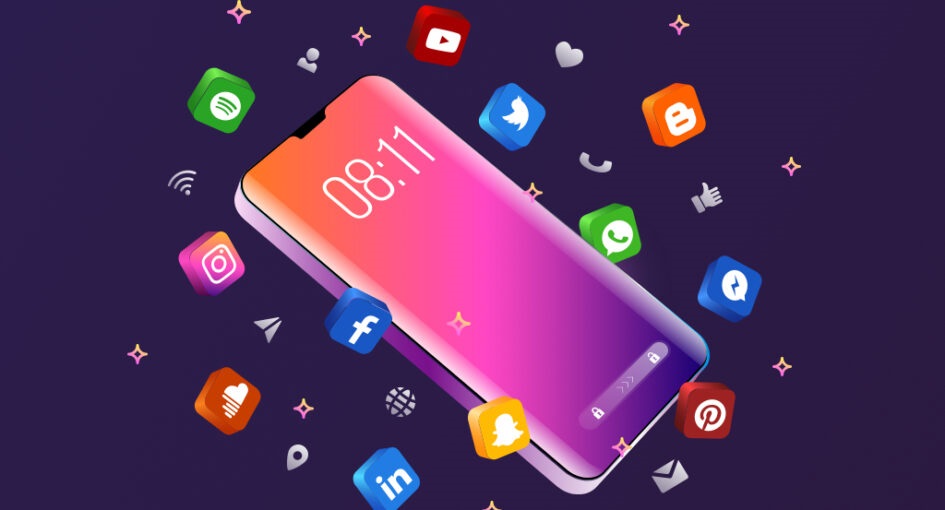
In today’s digital age, mobile applications have become an integral part of our daily lives. With the rise of smartphones and tablets, people are using mobile apps more than ever before. However, with so many apps available, it’s becoming increasingly difficult for developers to stand out in the crowded app market.
To create a successful mobile application, designers need to focus on creating user-friendly and engaging apps that provide a seamless experience for the user. Here are some tips for designing mobile applications that users will love:
Define your target audience: Before you start designing your mobile app, it’s important to define your target audience. Understanding your audience’s needs and preferences will help you create an app that meets their expectations.
Keep it simple: When it comes to mobile apps, simplicity is key. Design a clean and uncluttered user interface that is easy to navigate. Use minimal text and focus on visual elements such as icons and images to communicate information.
Optimize for different devices: Mobile devices come in a variety of shapes and sizes, so it’s important to design your app to work well on different devices. Ensure that your app is responsive and can adapt to different screen sizes.
Focus on performance: Mobile users expect apps to be fast and responsive. Optimize your app’s performance by minimizing loading times and reducing the app’s size.
Make it engaging: To keep users coming back to your app, you need to create an engaging experience. Use gamification techniques, such as rewards and achievements, to motivate users to continue using your app.
Use push notifications wisely: Push notifications can be a powerful tool for engaging users, but they can also be annoying if used too frequently. Use push notifications sparingly and only for important updates or notifications.
Test and iterate: Once you’ve designed your mobile app, it’s important to test it thoroughly before releasing it to the public. Use user testing and feedback to identify and fix any usability issues. Continuously iterate and improve your app based on user feedback.
Focus on accessibility: Ensure that your app is accessible to all users, including those with disabilities. Incorporate features such as high-contrast mode, screen readers, and voice commands to make your app more inclusive.
Use personalization: Personalization can make your app feel more tailored to the user’s needs and preferences. Consider incorporating features that allow users to customize their experience, such as theme options or personalized recommendations.
Integrate social media: Social media integration can help to increase engagement and user retention. Allow users to share their activity within the app on social media platforms and provide social login options to make it easy for users to sign up and log in.
Provide offline functionality: Not all users have access to a reliable internet connection at all times. Consider providing offline functionality, such as the ability to save content for offline viewing, to ensure that your app remains useful even without an internet connection.
Prioritize security: Users are increasingly concerned about data privacy and security. Ensure that your app is secure by incorporating features such as two-factor authentication and data encryption.
Provide excellent customer support: Excellent customer support can help to build trust and loyalty with users. Mobile applications provide multiple channels for users to get help, such as in-app chat support or a dedicated customer support email address.
Consider internationalization: If your app is intended for a global audience, consider internationalization features such as support for multiple languages and localization of content.
Use animations and micro-interactions: Animations and micro-interactions can make your app feel more responsive and engaging. Use animations to provide feedback when a user completes an action, such as a button press or form submission.
Allow for customization of the interface: Users have different preferences when it comes to the look and feel of an app. Consider allowing users to customize the interface by changing the color scheme, font size, or layout of the app.
Incorporate social proof: Social proof, such as user reviews and ratings, can help to increase trust and credibility. Display user reviews and ratings prominently within the app to help users make informed decisions.
Use a consistent design language: Consistency is key when it comes to mobile app design. Use consistent design language throughout the app, including typography, color schemes, and iconography.
Design for offline-first: In addition to providing offline functionality, consider designing your app with an offline-first approach. This means designing the app to work seamlessly in offline mode and optimizing for low-bandwidth connections.
Optimize for touch interactions: Mobile devices rely heavily on touch interactions, so it’s important to optimize your app for touchscreens. Use large buttons and touch targets to make it easy for users to interact with your app.
Provide in-app tutorials and onboarding: Users may be hesitant to try a new app if they are unsure how to use it. Provide in-Mobile applications tutorials and onboarding to help users get started with your app and understand its key features.
By incorporating these unique points into your mobile app design, you can create a user-friendly and engaging experience that users will love.
In conclusion, designing a successful mobile application requires a focus on creating a user-friendly and engaging experience for the user. By following these tips, designers can create apps that stand out in the crowded app market and provide value to users.